Bylaws and fines | Calgary Parking
There are three sets of bylaws and regulations that relate to parking in Calgary:
These bylaws exist to:
Common parking offences
A vehicle is “parked” when it stays in one place, regardless of whether it is occupied or running or not. This does not include if you’re actively loading or unloading passengers, or if you’re stopped because of a Peace Officer or traffic control device (e.g. traffic light, stop sign, etc.).
The most common reasons you can receive a ticket under the Traffic Bylaw are:
Parking too close for safety
You may receive a ticket and/or be towed, if you park any portion of your vehicle within 5 meters of:
- A stop or yield sign
- Fire hydrant
- An intersection
- Marked crosswalk
To avoid getting a ticket:
- Park well back as 5 meters is approximately 16 feet
- The licence plate and zone number entered must be an exact match to your vehicle's licence plate and the zone where the vehicle is parked.
- If your vehicle is towed, the towing and storage fees must be paid in full to pick up your vehicle however, an associated parking ticket may be paid at a later date
| Payment schedule | Within 10 days | Between 10 and 30 days | After 30 days |
|---|---|---|---|
| Fine | $40 | $50 | $75 |
See Calgary Traffic Bylaw Section 3(1)
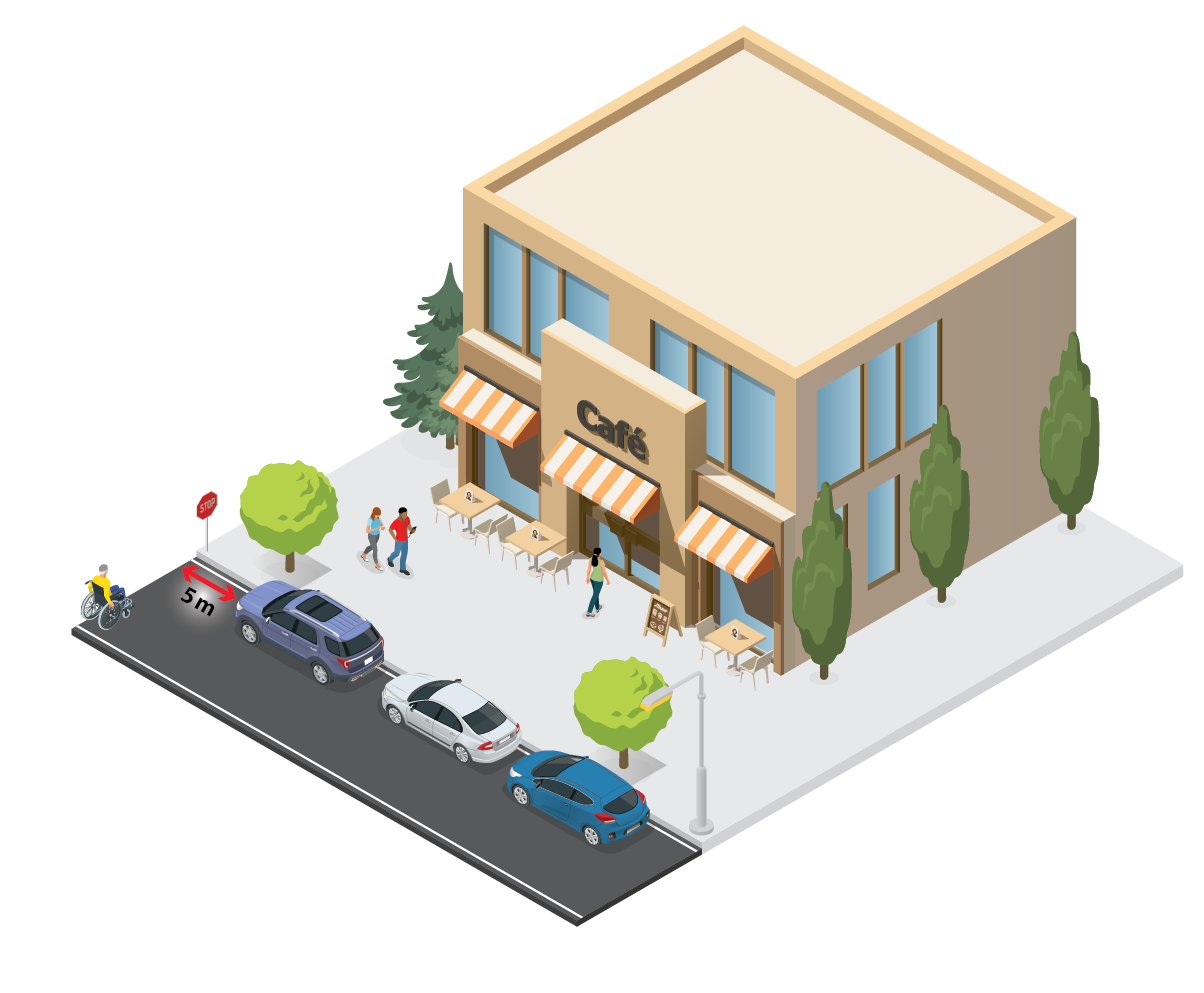
Unpaid parking or registration
You must start a parking session in all payment and registration required zones for the whole time your vehicle will be parked. Both the licence plate and zone number entered must be an exact match to your vehicles licence plate and the zone where the vehicle is parked.
You have to start a parking session even if you are:
- Waiting for passengers and not actively loading or unloading them
- Pulled over to use your cell phone, check text messages or emails, or checking a map
- Making a delivery or picking something up
This does not apply to emergency vehicles or properly marked government vehicles.
To avoid getting a ticket:
- Start a parking session
- Enter the licence plate and zone number correctly
- Purchase or register the parking session for the entire time the vehicle is parked
- Verify that your licence plate is activated on your account (e.g., ParkPlus, Monthly or Flex Pass contract)
| Payment schedule | Within 10 days | Between 10 and 30 days | After 30 days |
|---|---|---|---|
| Fine | $40 | $50 | $75 |
See Calgary Traffic Bylaw Section 9(14)
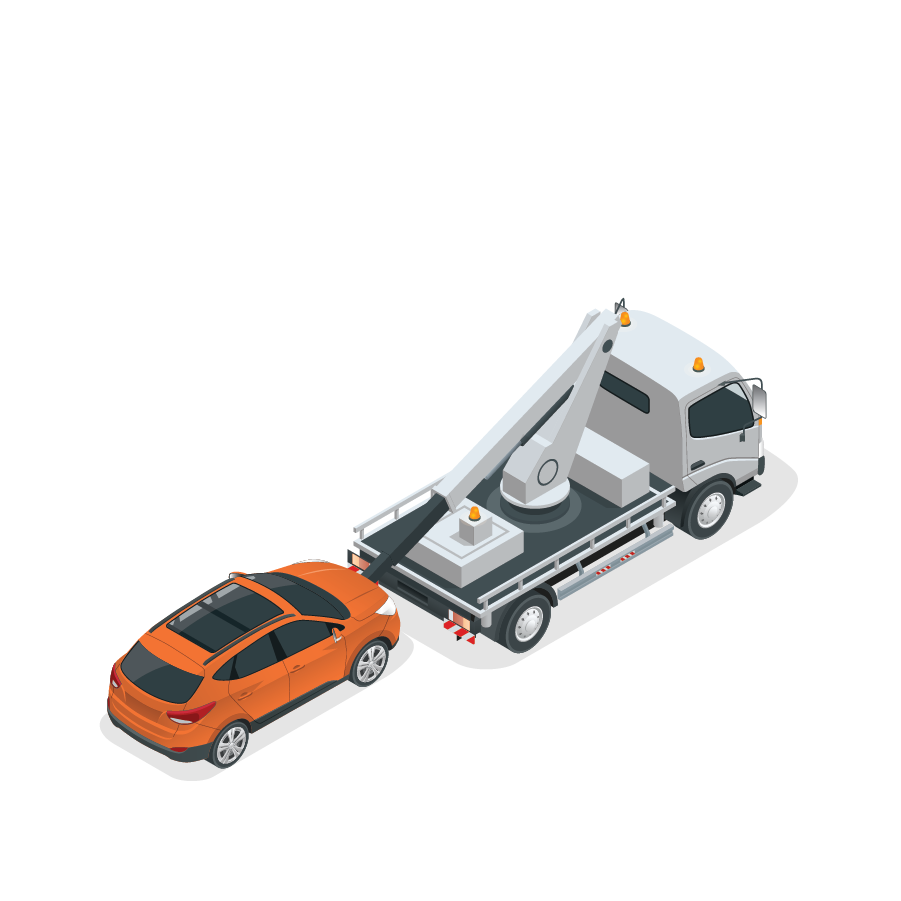
Unauthorized parking on private property
You must receive permission from the owner, tenant, occupant, or person in control to park on private property. If you park on private property without permission where signs clearly indicate it is private property, you can get a ticket and/or be towed.
To avoid getting a ticket:
- Follow all instructions on the posted signage including making the appropriate payment or registration
- Verify that your licence plate is activated on your account (e.g., Calgary Zoo, Telus Spark, Heritage Park)
| Payment schedule | Within 10 days | Between 10 and 30 days | After 30 days |
|---|---|---|---|
| Fine | $40 | $50 | $75 |
See Calgary Traffic Bylaw Section 28(1)
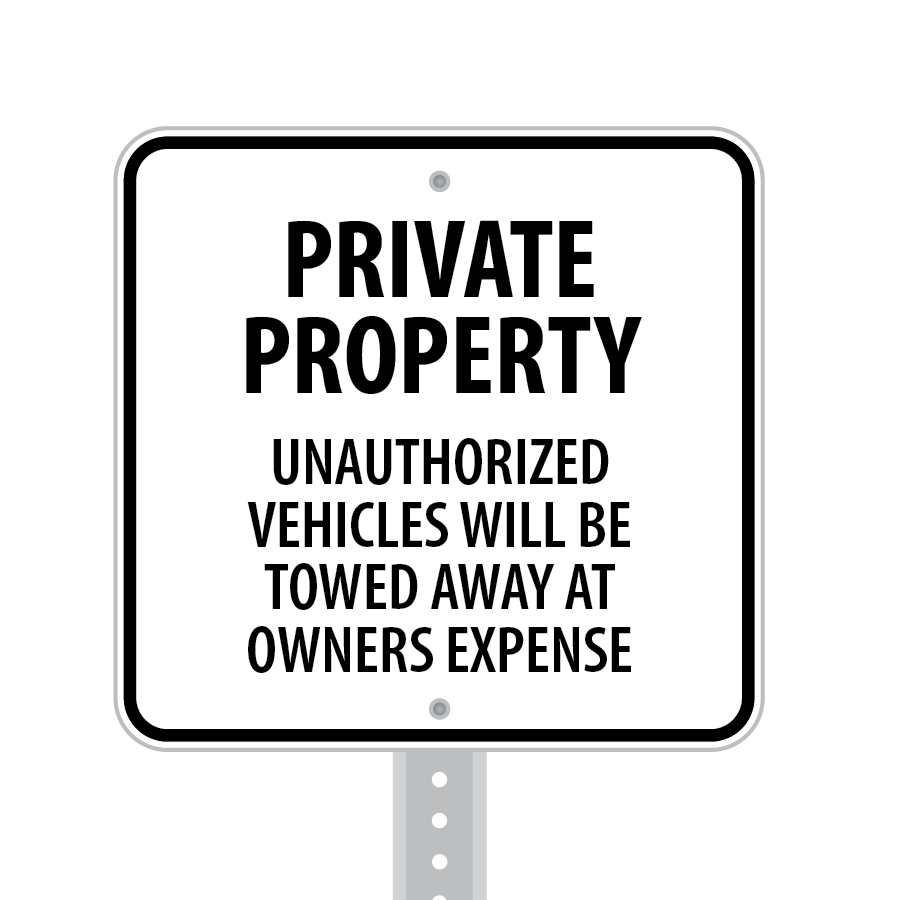
Parking longer than allowed
You may only park for the allowed amount of time on the parking sign. If you park for a longer period of time than the sign indicates, you can get a ticket.
To avoid getting a ticket:
- Move the vehicle within the timeframe posted
- Obtain a Residential parking permit; if your address qualifies
| Payment schedule | Within 10 days | Between 10 and 30 days | After 30 days |
|---|---|---|---|
| Fine | $40 | $50 | $75 |
See Calgary Traffic Bylaw Section 13(1)
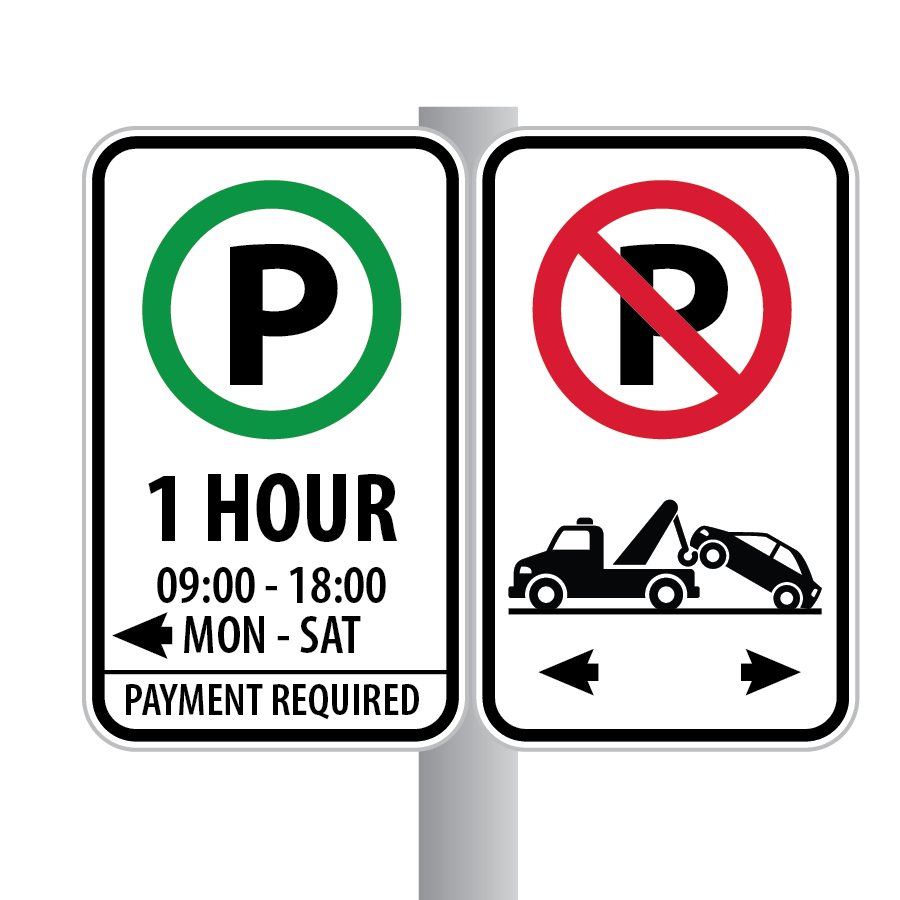
Parking in an accessible stall without handicap placard or licence plate
You must display a placard or licence plate that was issued or recognized by the Solicitor General to stop or park in an accessible parking stall or loading zone. If any portion of the vehicle is parked or stopped in an accessible zone without displaying the placard or licence plate, you can get a ticket.
To avoid getting a ticket:
- Pay attention to the distance on the posted signage as the distance is not standard
- Keep in mind 1 meter is approximately 3.5 feet
- Make sure your placard or plate is visible
| Payment schedule | Within 10 days | Between 10 and 30 days | After 30 days |
|---|---|---|---|
| Fine | $200 | $250 | $300 |
See Calgary Traffic Bylaw Section 32(3) and 34
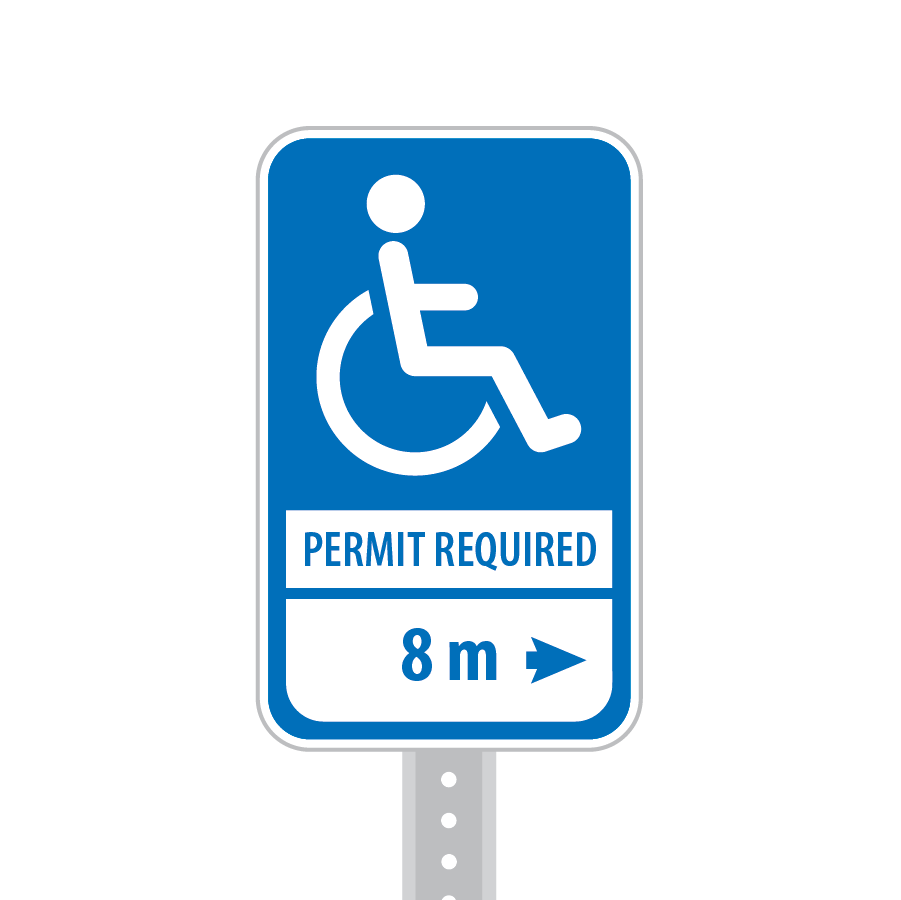
Parking during street sweeping or snow bans
You must remove your vehicle where signs are placed for street sweeping or when a snow ban is activated. If you do not move your vehicle during street sweeping or snow bans, you can get a ticket and/or be towed.
To avoid getting a ticket:
- Move your vehicle off the road during the entire duration of the ban
- Your vehicle must remain off the road even after the maintenance truck has cleared the road
- Sign up for roads notifications online.
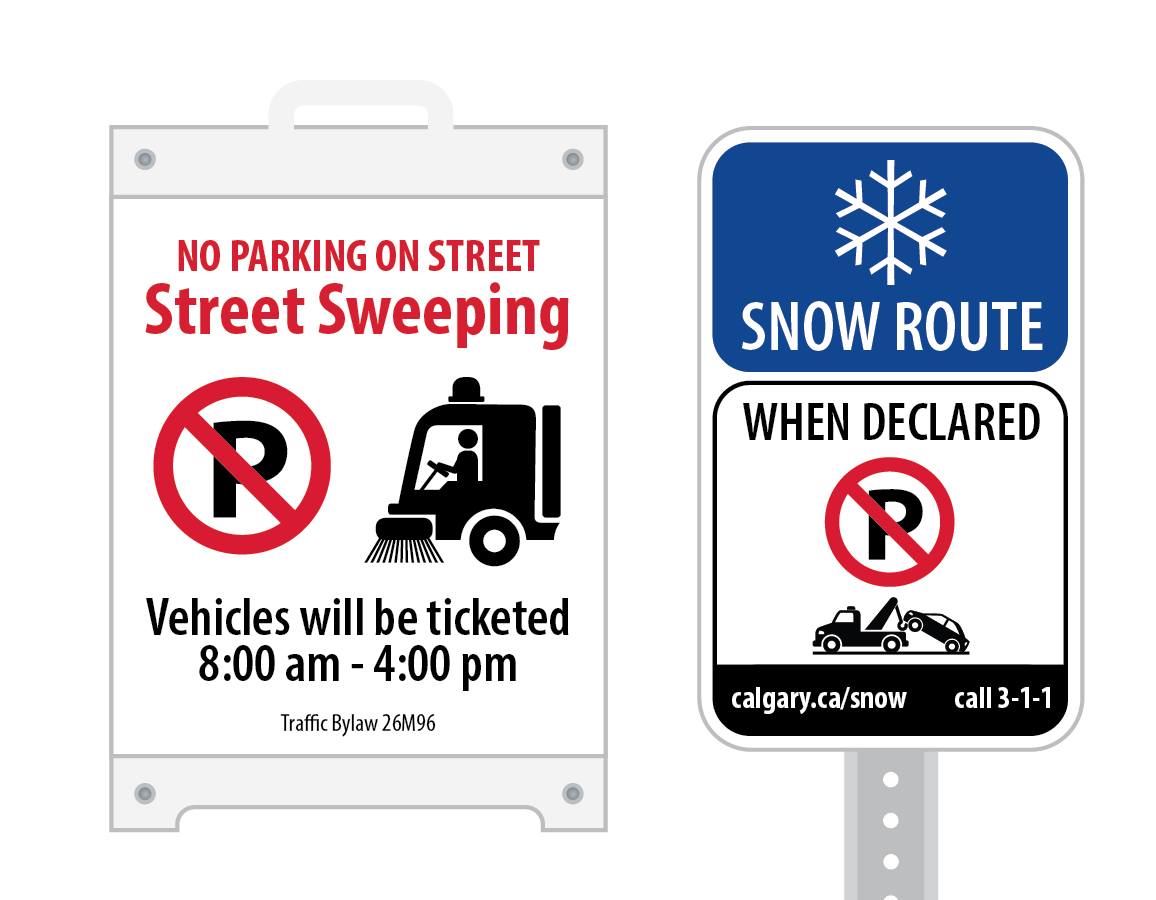
| Payment schedule | Within 10 days | Between 10 and 30 days | After 30 days |
|---|---|---|---|
| Snow route | $80 | $90 | $120 |
| Street sweeping | $80 | $90 | $120 |
See Calgary Traffic Bylaw Section 37
Leaving a trailer on a public street
All removable trailers or campers must be attached to their towing vehicle at all times when parked on a public street or alley. Detached trailers include things like 5th wheel camping trailer, tent trailer, utility trailer, boat on a trailer, homemade trailers and semi-trailers. If the trailer is detached from the towing vehicle for any length of time, you may get a ticket.
| Payment schedule | Within 10 days | Between 10 and 30 days | After 30 days |
|---|---|---|---|
| Fine | $40 | $50 | $75 |
See Calgary Traffic Bylaw Section 16(1)
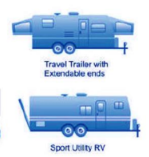
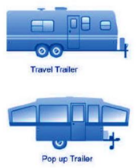

Parking a large recreational vehicle (RV)
If you don't have a front driveway, you can park your RV along your property line directly in front, beside or behind your home for up to three consecutive days, followed by two days that it needs to be in storage or at an RV park/campsite. It must be removed for at least 48 consecutive hours before you park in the same spot again. You can get a ticket if your RV is parked longer than three days or returns to the same spot within 48 hours.
If you have a front driveway:
- Between April 1 and October 31, an RV can be parked in your front driveway for three consecutive days. After this period, it must be removed from the area for at least 48 hours. Please note that if you have a suitable front driveway, street parking is not allowed.
- Between November 1 and March 31, any RV may be parked for up to three days on the street in front of your home, followed by 48 consecutive hours that it needs to be off-site, for example, in storage or at an RV park/campsite. Please note that parking on the front driveways is not allowed.
Parked RVs cannot block the view of intersections, crosswalks, playgrounds or signs. Parked RVs cannot obstruct the movement of other vehicles. Detached trailers and campers cannot be parked on city streets or alleys. Learn more at calgary.ca/RVparking.
| Payment schedule | Within 10 days | Between 10 and 30 days | After 30 days |
|---|---|---|---|
| Fine | $160 | $200 | $400 |
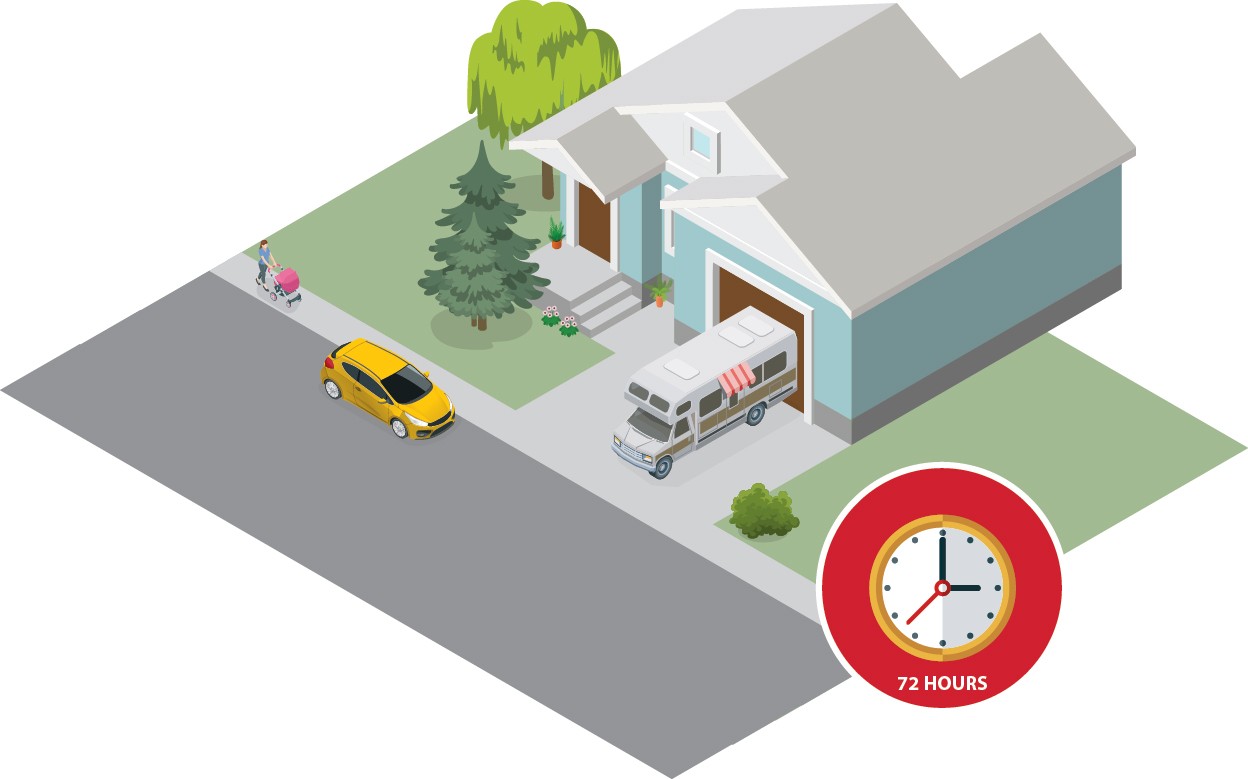
The most common reasons you can receive a ticket under the Parking Bylaw are:
Parking in a No Stopping or No Parking zone
Once a vehicle has stopped moving, even if is occupied, it is considered to be stopped whereas a vehicle is considered to be parked if you are not actively loading or unloading it. You may not stop or park in a no stopping zone for any reason.
If stopping in a no parking zone you must be actively loading or unloading your vehicle. If you stop or park in these zones you may receive a ticket and/or your vehicle may be towed with additional costs.
To avoid getting a ticket:
- Carefully read the posted signage
- A significant portion of the downtown core is no parking from 7:00 am to 8:30 am and from 3:30 pm to 6:00 pm
- Pay attention to the directional arrows and any times shown on the signage
- If your vehicle is towed, the towing and storage fees must be paid in full to pick up your vehicle however, an associated parking ticket may be paid at a later date
| Payment schedule | Within 10 days | Between 10 and 30 days | After 30 days |
|---|---|---|---|
| Fine | $40 | $50 | $75 |
See Calgary Traffic Bylaw Section 3(1)(k)
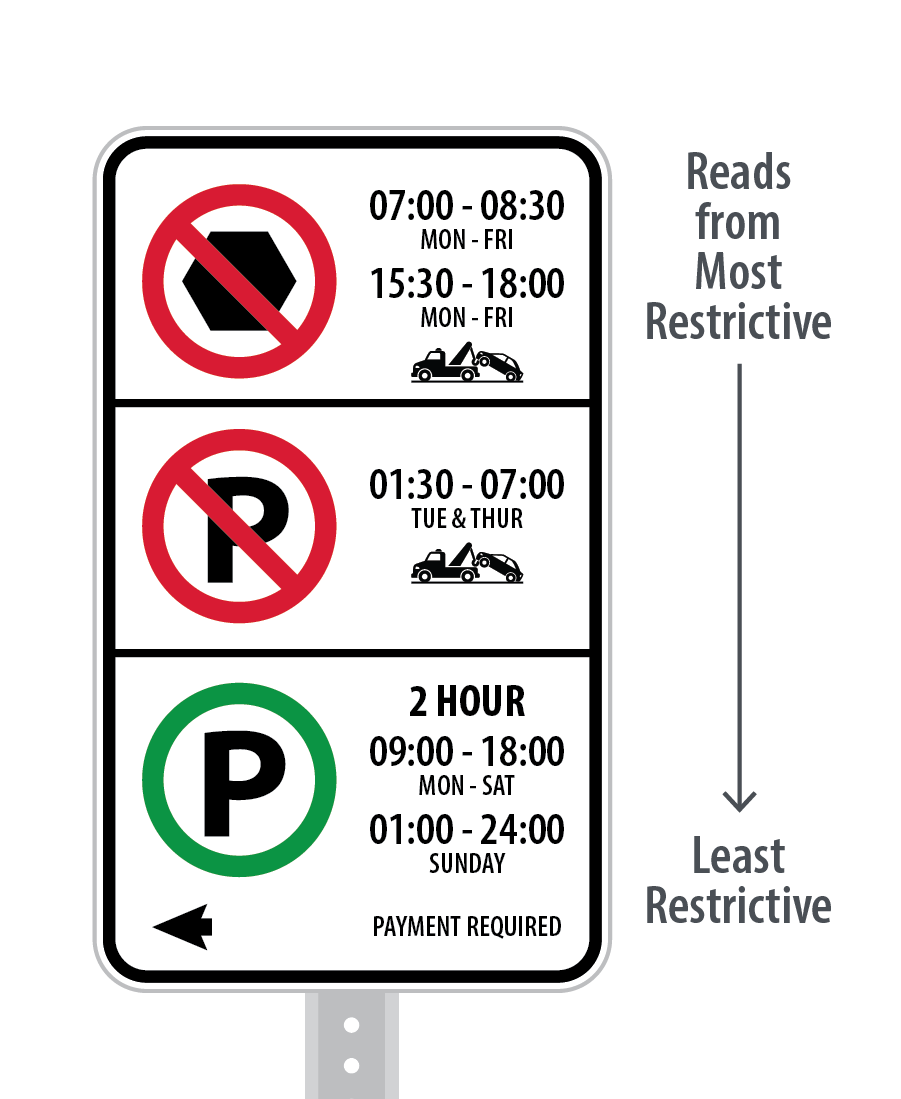
Parking too close to the curb break, garage or driveway
You may receive a ticket and/or be towed if any part of your vehicle is parked within 1.5 meters of the following:
- Curb break
- Driveway
- Garage
In alleys, the no-parking zone in front of driveways or garage entrances extends across the entire width of the alley. Even if you own the driveway or garage, parking within 1.5 meters can result in a ticket and/or towing.
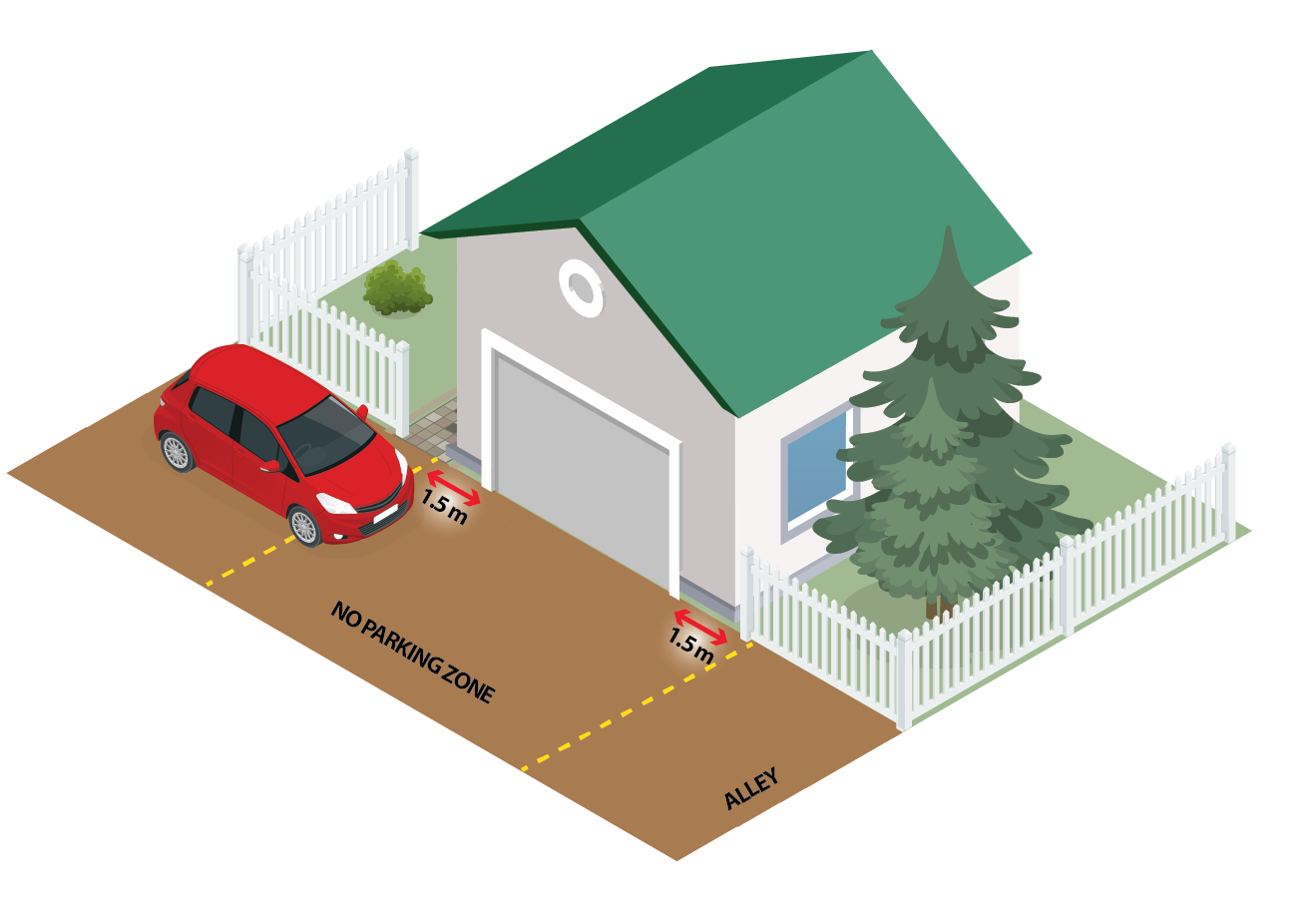
To avoid getting a ticket:
- Park well back as 1.5 meters is approximately 5 feet
- If your vehicle is towed, the towing and storage fees must be paid in full to pick up your vehicle however, an associated parking ticket may be paid at a later date
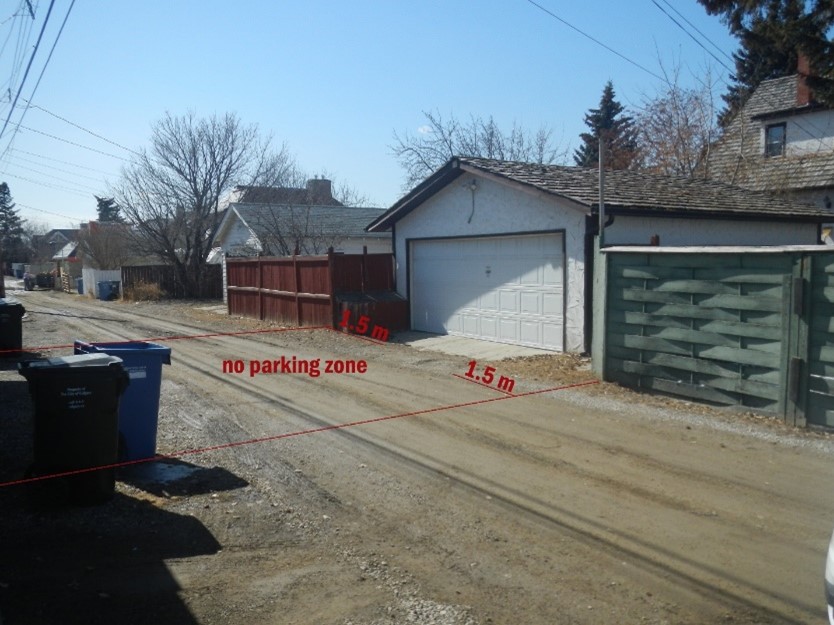
| Payment schedule | Within 10 days | Between 10 and 30 days | After 30 days |
|---|---|---|---|
| Fine | $40 | $50 | $75 |
For on-street garage or driveway, see Calgary Parking Bylaw section 3(1)(g).
For alleys, garage or driveway, see Calgary Traffic Bylaw Section 27(1).
For curb breaks, see Calgary Traffic Bylaw Section 13(3)
Angle parking in a cul-de-sac with no signage
You must park parallel with right hand wheels to the curb in a cul-de-sac, unless there is signage that says otherwise. If you park at an angle in a cul-de-sac that doesn’t have signage, you can get a ticket. This bylaw is enforced only when we receive complaints.
To avoid a ticket:
- Apply to get angle parking signage for your cul-de-sac
- Make friends with your neighbours as enforcement is done at request only in cul-de-sac’s
- Parallel park your vehicle in the same direction as the flow of traffic
| Payment schedule | Within 10 days | Between 10 and 30 days | After 30 days |
|---|---|---|---|
| Fine | $40 | $50 | $68 |
See Calgary Traffic Bylaw Section 4(1)(a)
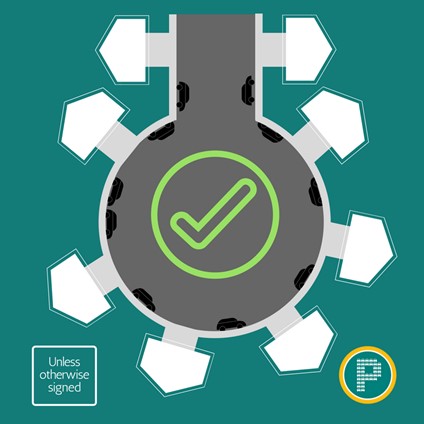
Parking a non-compliant vehicle on public property
In order to park on a public street or alley your vehicle must move every 72 hours, have valid registration, insurance and must be in working condition. If your vehicle needs repairs, has flat tires, no valid insurance, no plate or an expired plate, you can get a ticket and/or be towed.
To avoid a ticket:
- Move it every 72 hours to avoid it being considered abandoned
- Park or complete any necessary repairs on private property
- Obtain permission from the property owner if the private property is not yours
- Keep your registration and insurance up to date
| Payment schedule | Within 10 days | Between 10 and 30 days | After 30 days |
|---|---|---|---|
| Fine | $40 | $50 | $75 |
| Abandoned vehicle | $160 | $200 | $270 |
See Calgary Traffic Bylaw Section 14, Calgary Parking Bylaw Section 8(1).
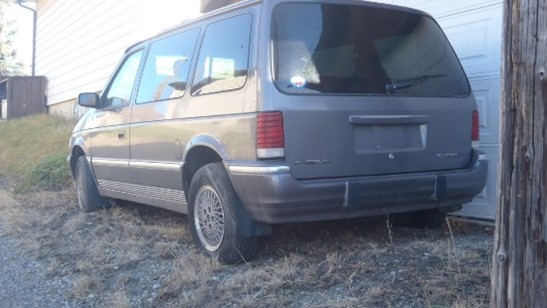
View a complete list of fines for all Traffic Bylaws (Schedule "A", pages 57-63) and Parking Bylaws (Schedule "A", pages 8 & 9)



